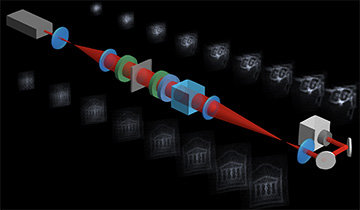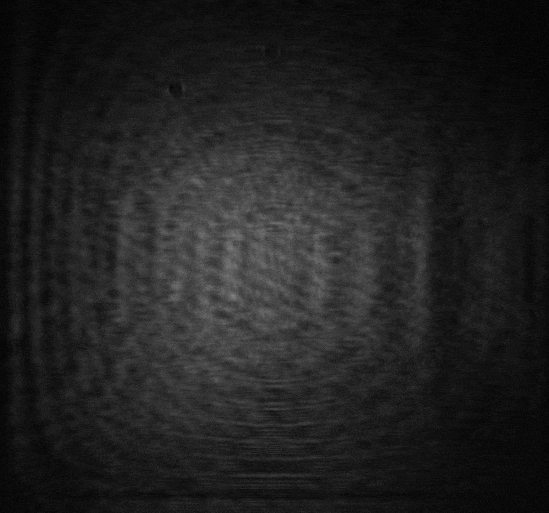
A schematic depicting the experimental setup. The top and the bottom illustrate the appearance of hidden images—the logos of the University of Ottawa and its football team—under illumination of the device. [Image: F. Hufnagel, University of Ottawa] [Enlarge image]
Ancient bronze mirrors from China and Japan were long regarded as magic because, when hit with direct sunlight, they could project a hidden image onto a screen. In the 1800s, scientists discovered that the effect results from slight deformations on the mirror’s surface, too small to see with the naked eye.
Now, researchers from the University of Ottawa, Canada, have created both a magic mirror and a magic window—a similar concept, but with transmission instead of reflection—that are completely flat (Optica, doi: 10.1364/OPTICA.454293). The optical devices, fabricated with liquid crystals, may be implemented in works of art, architecture or next-generation 3D displays.
An ancient mystery solved
Magic mirrors, which have a convex reflecting face and a pattern embossed on the back face, date back to 2000 B.C. They appear to be an ordinary mirror, but when illuminated by a light source on the reflecting face, the same embossed pattern somehow emerges in a patch of light projected onto a screen.
“The magic mirrors of China and Japan have been intriguing optical devices for thousands of years,” says first author Felix Hufnagel of the University of Ottowa. “Recent mathematical developments by Sir Michael Berry, to establish a complete understanding of magic mirrors and then propose the idea of magic windows, is what led us to pursue the creation of one of these devices.”
Essentially, the embossed pattern is reproduced by small surface variations on the reflecting face, and the projected image results from pre-focal ray deviation. Berry figured out that the intensity of this image can be described by the Laplacian of the height of these variations, which must be smooth enough so that the light is not focused too sharply. Instead of height deformations, magic windows form this Laplacian image through very slight thickness deformations.
Producing hidden images
Hufnagel and his colleagues created a magic mirror using a reflective spatial light modulator (SLM). First, they computed the required phase pattern for a desired image and then uploaded that pattern to the SLM. Next, a laser beam with enlarged Gaussian beam shape was reflected off the face of the SLM. Lastly, the intensity distribution—from the plane of the SLM down to the image formation planes—was recorded with a digital camera.

The magic windows the researchers created appear perfectly flat to the naked eye but, in fact, have slight variations that create an image in response to light. The video shows the intensity distribution smoothly evolving from the input beam profile to the desired image pattern. [Image: F. Hufnagel, University of Ottawa]
For the magic window, the researchers employed a liquid crystal device known as a Pancharatnam–Berry optical phase element (PBOE). The PBOE allowed them to change the phase the light will gain at each point of the window by changing the orientation of the liquid crystals.
“This change in orientation is analogous to a differing thickness across the glass of a conventional window or lens,” says Hufnagel. “By using liquid crystal technology, our magic window has the additional feature of being completely flat.”
They were able to successfully produce visible images that remained stable over a long range of distances, which is part of what differentiates magic mirrors and windows from other methods of image formation. Next, the researchers aim to create a magic window using plasmonic metasurfaces, which could have certain advantages like polarization and wavelength independence.
